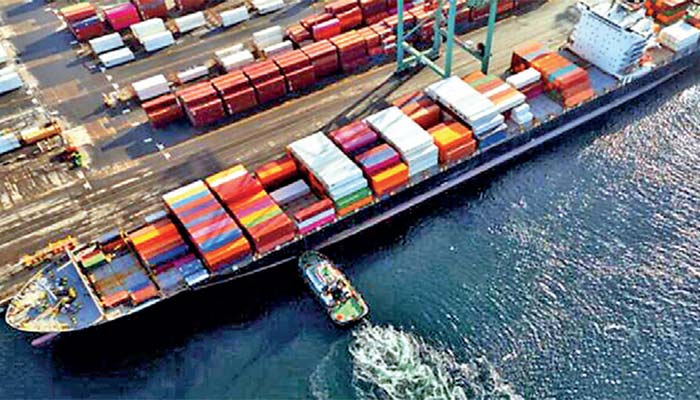Saturday Oct 25, 2025
Saturday Oct 25, 2025
Friday, 15 August 2025 14:41 - - {{hitsCtrl.values.hits}}
 According to Sea-Intelligence, transpacific container shipping has experienced sharp fluctuations in demand and freight rates due to shifting US-China trade policies.
According to Sea-Intelligence, transpacific container shipping has experienced sharp fluctuations in demand and freight rates due to shifting US-China trade policies.
On 9 April 2025, the US imposed 145% tariffs on Chinese imports, significantly dampening container demand on Asia–North America trade lanes.
Shipping lines responded by withdrawing capacity, particularly on the Asia–North America West Coast (NAWC) route.
However, the US government’s 12 May decision to pause tariffs for 90 days led to an immediate surge in demand, outpacing available supply and driving up spot rates. In response, carriers quickly reinstated capacity on key Transpacific routes.
This sudden spike led to expectations that the traditional August peak season would shift earlier, into June and July, as US importers sought to front-load cargo ahead of the tariff pause expiry.
But by June, importers began pulling back, likely due to regulatory uncertainty. This reversal in demand, coupled with the newly added capacity, has since driven spot rates down sharply. Sea-Intelligence data also shows how this volatility impacted carriers’ planning.
On the Asia–NAWC trade, planned capacity for June and July initially increased by 770,000 TEU as of 30 May, compared to a 9 May baseline. However, by 4 July, this had been reduced to 590,000 TEU — a 23% cut — as carriers cancelled sailings in response to waning importer demand. Similarly, on the Asia–North America East Coast route, carriers had planned to inject 348,000 TEU for June and July. This was scaled back by 24% to 265,000 TEU by early July. Sea-Intelligence concludes that the rapid shifts in trade policy and importer behaviour have created high volatility in both freight rates and capacity planning, underscoring the market’s sensitivity to geopolitical developments.
Recently, Xeneta revealed that spot freight rates on major east-west trades are diverging sharply, with Transpacific rates falling amid excess capacity and North European rates rising due to congestion.